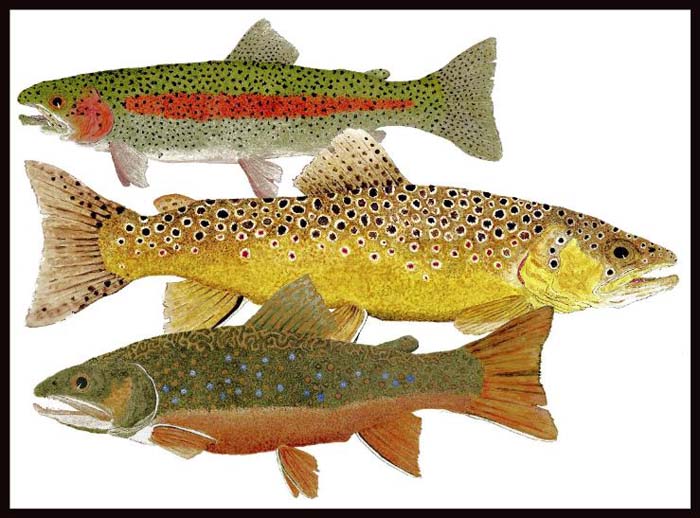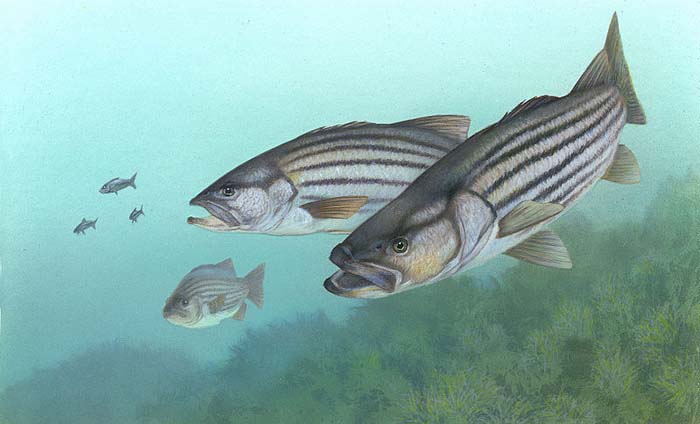An Office Runs Through It: What Fly Fishing Can Teach About Management
by Victor Lipman / Forbes

Victor Lipman is a Forbes Contributor. He writes about management in its many forms.
[dropcap]A[/dropcap] river is not an office, but the lessons learned there can be translated into any office. As one who has spent many hours in both rivers and management, I often felt I learned less about management from textbooks and more from flowing water and the behavior of fish.
Like most fly fisherman I’ve spent many hours being outsmarted by trout. But being so smart, they taught me a few things too. In that spirit, what fly fishing can teach about management:
Small things make a big difference – This is the foundation of fly fishing and arguably foundational for management too. Successful fly fishing hinges on the smallest details: the weight of the tippet (the fine clear line attached directly to the fly), the size of fly, pattern of fly, and accuracy and delicacy of cast, to name just a few. If any element in this chain is way off, so will be the fish. In the world of management, employee engagement and therefore performance are often influenced by small details as well: a pat on the back or word of encouragement for a job well done… the myriad of minor daily interactions that shape how an employee feels about a manager (and often about an entire organization). Small things matter, in a river or an office.
Matching the (motivational) hatch – “Matching the hatch” is another cornerstone of fly fishing – the notion of selecting the artificial fly most closely resembling the insects actually hatching on the river, since that’s what fish are feeding on and will want to eat. If brook trout are rising to a feast of ephemerella dorothea (tiny white mayflies), there’s no point trying to entice them with a much larger and darker Grey Ghost. The managerial equivalent is matching what I call “the motivational hatch” – a manager needs to understand what most motivates employees and then “match” their needs with appropriate rewards and incentives. Motivations are as individual as personalities. Some employees just want praise and recognition, others seek more time for family and better work-life balance, some may be lured by titles and corner offices, while still others may care for little beyond compensation and bonus. As on the river, it’s up to a manager to crack the code and determine what attractor will most motivate.
Reading the water – If I’d spent as much time reading management textbooks as I have “reading” water, I’d probably be a richer man today (at least financially). A good fly fisherman is constantly reading a river – assessing flow, current, depth, looking for rocks, submerged tree limbs, and considering the characteristics of nearby river banks, to determine where fish will be. A good executive is constantly reading the environment – market conditions, competitors, the broader economy, the health and vitality of one’s own workforce… to determine where customers are, what they want, and where the business is heading. Understanding the environment is central to success in both endeavors.

Rainbow, brown, and brook trouts by renowned watercolorist Thom Glace.
Catch and release – In fly fishing and business, what ultimately matters is not just what gets done, it’s the way it’s done. Long-term success requires sustainable results, not just results achieved with a trail of bodies in their wake. Fish caught and released will continue to enrich their environment and provide more sport for others. Managers who respect their human resources produce sustainable results, and recognize that well-treated, engaged employees will in the long run also be the most productive.
Do the right thing – Fly fishing is all about doing things the right way – matching the hatch, tying tight clean knots, casting in a manner that lets your fly down softly without disturbing the water and spooking fish. There are numerous steps in the process where things can go awry and result in no fish being caught. In business, the management equivalent is leading by example, modeling the right behavior, setting a standard others will want to follow. While the business world has its share of questionable behavior – the lure of princely executive compensation occasionally being a powerful motivator for malfeasance – those who act in a way that’s universally respected will find gaining the loyalty of others a much easier task.
Despite the many parallels between fly fishing and management, there’s one small but unmistakable difference I should note. Management is known to have its frustrations. There are good days and bad; as any manager will readily attest, some days can be quite good and others, shall we say, quite bad. That’s where the similarity ends.
When it comes to fly fishing, no day on the water is a bad day
Victor is author of The Type B Manager: Leading Successfully in a Type A World (Prentice Hall Press).
About Victor Lipman
I retired in 2012 from the corporate world with over two decades of Fortune 500 front-line and executive management experience, most of it in Communications and Marketing. I’ve long been interested as a practitioner in the subject of management, both good and bad, effective and ineffective, what works and what doesn’t. I’m author of “The Type B Manager: Leading Successfully in a Type A World” (Prentice Hall Press, 2015). I graduated from Harvard College and have an MBA from Western New England University. My work has appeared in Harvard Business Review, and I contribute regularly to Psychology Today. I’m founder and principal of Howling Wolf Management Training, LLC, and my current focus is on coaching and developing new managers.
Featured Image is striped Bass (Morone saxatilis)- art by Timothy Knepp U.S. Fish and Wildlife Service. A public domain image.


